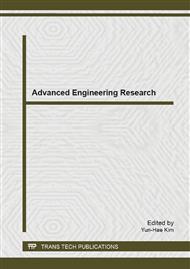p.3
p.7
p.12
p.18
p.22
p.26
p.31
p.35
Analysis and Simulation of UAV Aircraft Flight Dynamics
Abstract:
The objective of the present work is to evaluate the static and dynamic stability of the Flying Wing Unmanned Aircraft Vehicle (UAV) model using the Tornado software. The longitudinal and the lateral-directional aerodynamics were studied using the model with incompressible flow, asymmetric, conditions. The stability coefficients were calculated and give proof that the aircraft is statically stable. Using the stability coefficients, the longitudinal and lateral-directional equations of motion were written to evaluate the dynamic stability of the vehicle. Good flying qualities were obtained, rating in Level 1 for the Cooper and Harper scale.
Info:
Periodical:
Pages:
7-11
Citation:
Online since:
April 2014
Authors:
Price:
Сopyright:
© 2014 Trans Tech Publications Ltd. All Rights Reserved
Share:
Citation:


